“A Published Authoress”
Background
Fordel Road is named after a country estate associated with Glenfarg and Arngask in Perthshire, with which Corbett was familiar, and which appear as other street names on the Estate.
It runs parallel with Brownhill Road – the A205 south circular – and Sandhurst Road, and is on a steep incline. The houses in were built around 1896, and there are 140 of them, all of the same frontage design. They were originally built with 100 homes having 3 bedrooms and 40 having 4 bedrooms. Today many have loft conversions so increasing the number of bedrooms per house. Some have been converted into flats. They have large front gardens – many of which have given way to off street parking – and even larger back gardens. All the houses have the iconic Corbett keystone figures of either heads or fruit and vegetables above the street doors. When the front gardens were first laid out every house had 2 lime trees, of which now only 13 remain today.
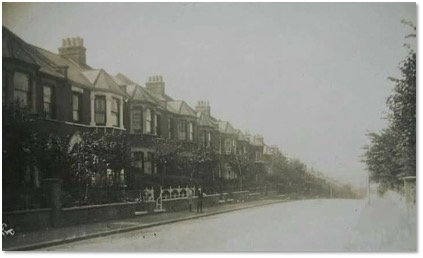
Fordel Road c 1918 (above, showing lime trees in the gardens) and the same scene today (below)
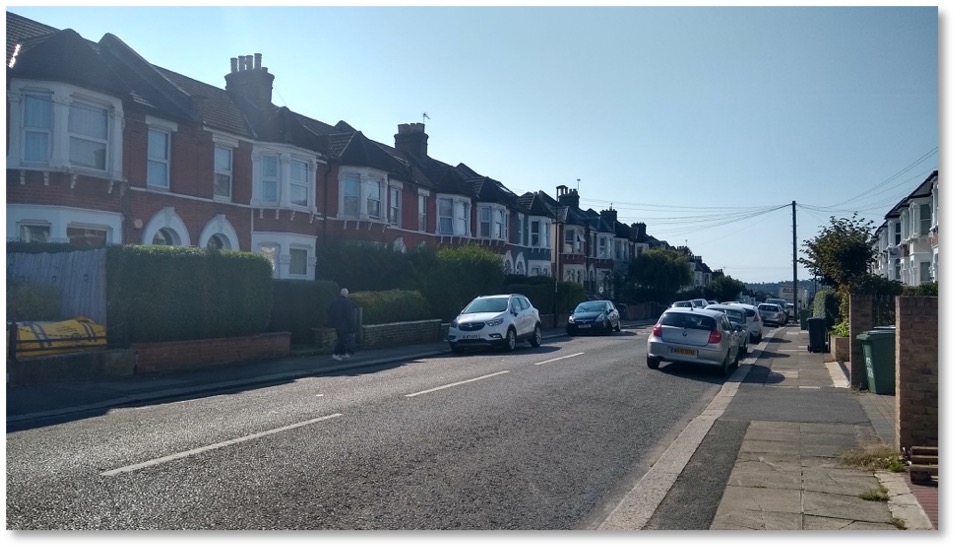
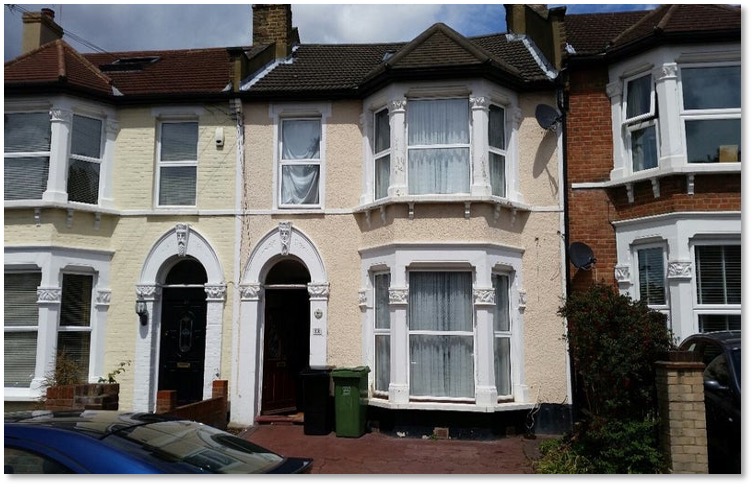
A typical house in Fordel Road. You can see the figure of a head over the door
The Early Residents: details from the 1911 Census
The 1911 census shows there were 890 people occupying 140 houses.
There were 318 women, 305 men and 267 children. There were a large number of children per household with several families recorded as having up to 9 children. At No. 64 a three bedroom house had 9 children plus parents. The most popular names for males were William, George, Henry and Alfred. The most popular female names were Mary, Alice and Emily. These were all very strong royal names.
There were a total of 246 people in employment. Clerks (69) of various types, servants (11) and telegraph (7) were the most common occupations. The term clerk comes from medieval times referring to a scholar, later evolving into record keeping then administration. Telegraph could mean a number of jobs for example, to deliver telegrams, cable joint, installer etc.
There were 8 houses with domestic servants recorded on the census. 7 lived in and 4 worked away. No. 29 shows Florence Isabella Bladon aged 39 yrs. Florence worked away from her home. At No. 36 lived Elsie Bowkett aged 18 as a servant. Two sisters lived at no 48, Nellie 22 yrs and Jessie aged 18 they both worked away from home. Alice Elizabeth Ting aged 30 lived at no 69 as a servant.
At No.118 lived Ethel Reed aged 19 as a servant. Mary Hinves 54 yrs was a maternity nurse also lived there. At No. 127 lived Violet Harriet Sarah Tuppenney aged 17 as a servant. Mary Margaret Bourne aged 17 lived at No. 130 as a servant.
Two families lived at No. 48. This was a four bedroom house. Herbert and Alexina Gill had four children of school age. Herbert was a law clerk.
John and Martha Bailey had three children. The two older girls were domestics and the younger girl was at school. John was a Lighterman. The ‘lighterman’ transported cargo from vessels in the river to docks or the shore and was a distinct class from the waterman who could only convey passengers. The boats in which the goods were transported were known as ‘lighters’ or ‘barges’.
The Rudd family lived at No. 64.This was a three bedroom house. Charles Augustas and Lucy G Rudd had nine children. The four older children were clerks as was Charles. This wasn’t as unusual as you might think, because ‘clerk’ was by far the most popular job on the Estate. The five younger children were at school.
At No. 8 lived the Hicks family. This was a four bedroom house. Fredrick William and Emily Elizabeth had six children from 1 year to 17 years. Caroline Alldavy, Emily’s mother, also lived there. Fredrick was an omnibus driver and Reginald, the oldest child was a plumber’s mate.
On top of that there were two lodgers, Frank and Vincent Bungay, father and son. Frank was also a plumber’s mate and Vincent was an errand boy. With 11 people, No. 8 was one of the busier households on the street.
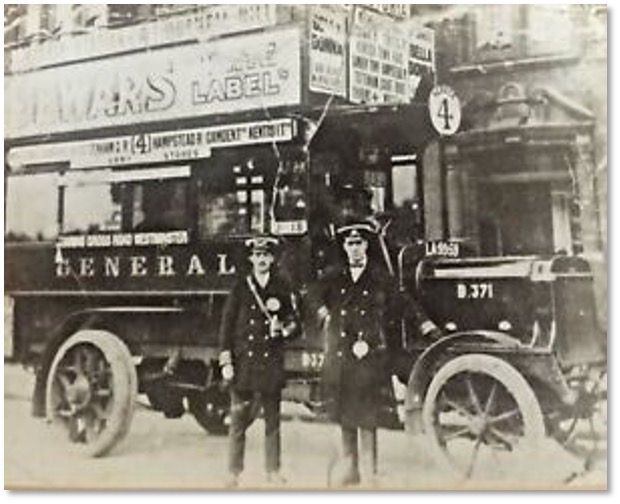
An omnibus, driver and conductor in the early 1900’s
William King with his five school age children lived at No. 98. This was a four bedroom house. William was an engineer’s clerk. There was a housekeeper, Emily Stevenson, aged 41 years from South Wales. There is no reference to a Mrs King on the census.
At No. 127 lived William Henry and Rose Annie Steer with their four school age children. This was a three bedroom house. William was an editor. There was also Violet Harriet Sarah Tuppenney, 17 years of age. Violet was a domestic servant.
Alfred and Lucy Hillier lived at No. 68. This was a three bedroom house. They had 8 children from 18 to 1 yrs. Alfred was a School Attendance Officer responsible for the enforcement of children to attend school, 1900 – 1939. Their work changed over the years from a punitive role to a new welfare role with support and help for the needy family. They had a nick name ‘kid-catcher’
An authoress
Cecily Marianna Rutley, born in 1887, lived at No. 112 Fordel Road and was a writer. She wrote children’s books about history, nature, legends and folktales. Some of her books are on sale on Ebay today.
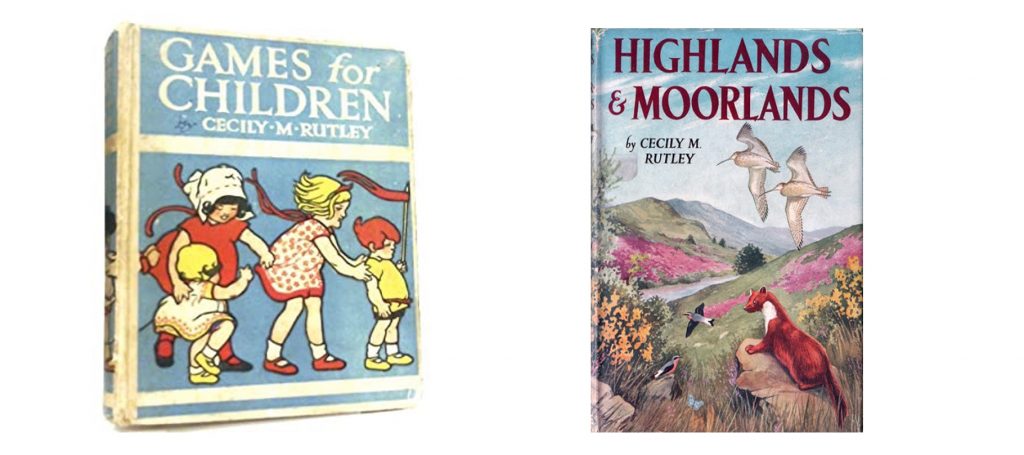
Just two of the many books Cecily wrote
A soldier
Benjamin Northcote Ingham lived at No. 43. He was a colour sergeant in the West African Frontier Force. The WAFF was a multi battalion field force formed by the British Colonial Office in 1900. It comprised of Nigeria, Gold Coast, Sierra Leone and Gambia. The battalion played a major role in both WW1 and WW2, receiving a royal recognition in 1928, becoming The Royal West African Frontier Force.
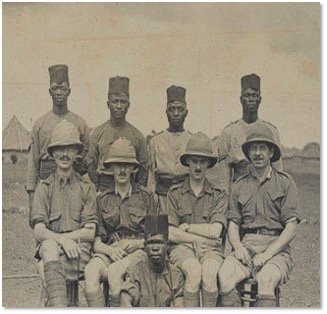
Soldiers of the WAFF from the 1900’s
Unusual surname origins
The 1911 census showed Violet Tuppenney living at No. 127.
The surname Tuppenny first appeared in England after the Norman Conquest of 1066. The family lived in Kent, they had the family seat as Lord of the Manor of Ancient Times after 1066. Tuppenny is a reference to Tupigny in Flanders. The region is now divided between France and Belgium and was the centre for many centuries of the textile industry of Europe. The Flemish Weavers as they were known were encouraged by various English kings to come to England.
To escape uncertainty of political and religious persecution many English people sailed to the colonies held by Britain. Some settled in Canada and the USA. Tuppennys were some of the first immigrants to arrive in North America. Thomas Tuppenny landed there in 1710. This is an unusual surname with various spellings. Toopenny, Towpenny, Tupigny, Tupenny and others.
Tuppenny was also a nickname for a money lender or banker, to ‘turn a penny’.
Northmore is another surname with interesting origins.
Northmore may have come from the north of England. ‘North’ and the old English for ‘Mor’, Northmore.
Narramore comes from Devonshire. The earliest recording in London was 1628.William Narramore married Sarah Bennett in St Dunstans in Stepney.
Other spellings – Naramore, Normore, Narrowmore, Bynorthmore and others.
In 1939 general labourers, farmers and unpaid domestic duties (house wives) were some of the top reported occupations for men and women in the UK with the surnames Tuppenny and Northmore.
After 1066, the Norman barons introduced surnames into England, and the practice gradually spread. The identifying names were changed or dropped at will, but eventually they began to stick and got passed on. So trades, nicknames, places of origin, and fathers’ names became fixed surnames.
Names such as Fletcher and Smith, Redhead and Swift, Green and Pickering.
By 1400 most English families, and those from Lowland Scotland, had adopted the use of hereditary surnames.
Surnames became more of a requirement when government introduced personal taxation in 1799. This was introduced by PM William Pitt the Younger as a temporary measure to cover the cost of the Napoleonic Wars. This was known as Poll Tax in England.
A Care Home
The houses at Nos. 26/28 have been converted into The Welcome Care home. This is a private residential home with 15 en suite rooms. The home has been there for over 30 years.